跟踪需求更改
当您在需求与设计、测试或其他需求之间创建链接时,如果链接的需求、链接的 MATLAB® 代码行或 Simulink® Test™ 测试用例发生了更改,Requirements Toolbox™ 会检测到这些更改。当软件检测到更改时,它会将更改问题与链接关联起来。您可以评估更改的影响,清除更改问题,并留下指示所执行的任何操作的注释。
在本教程的这一步,您将向 myAdd 函数的帮助添加一些额外的文本,查看存在更改问题的链接,调查更改的内容,评估更改的影响,并确定协调更改所需的操作。
编辑函数帮助
打开 myAdd3 工程,该工程与 myAdd2 工程相同,但启用了源代码管理。
openProject("MyAdd3");myAdd 第 2 行的注释提供了有关该函数的帮助。
help myAddmyAdd - Adds inputs u and v and outputs the result
打开 myAdd 函数。
open myAdd 通过将以下代码复制并粘贴到第 3 行,将函数语法添加到 myAdd 函数的帮助中:
% y = myAdd(u,v)
保存对 myAdd 的更改。在编辑器选项卡中,点击保存。
查看更改问题
打开需求编辑器。在 App 选项卡的验证、确认和测试下,点击需求编辑器。确保 Requirements Toolbox 分析的是更改问题的链接并且显示更改信息。在需求编辑器的视图部分,点击信息 > 更改信息。然后,点击刷新。通过点击显示链接查看存在更改问题的链接。

需求编辑器中的红色突出显示表示链接集中存在更改问题的链接。包含链接集的行指示 4 个链接中的 2 个链接的源已更改。
由于链接 1 和 3 直接链接到 myAdd.m 中的函数声明行,因此 Requirements Toolbox 指示当函数中的任何代码行发生更改时,链接都会存在更改问题。相反,由于链接 2 和 4 直接链接到该函数中的代码行,因此这些链接仅在这些代码行发生更改时才会存在更改问题。
调查更改
通过链接导航到发生了更改的源代码来调查更改的影响。在需求编辑器中,选择第一个链接。在右窗格中的属性下,点击源旁边的超链接导航到链接的源。
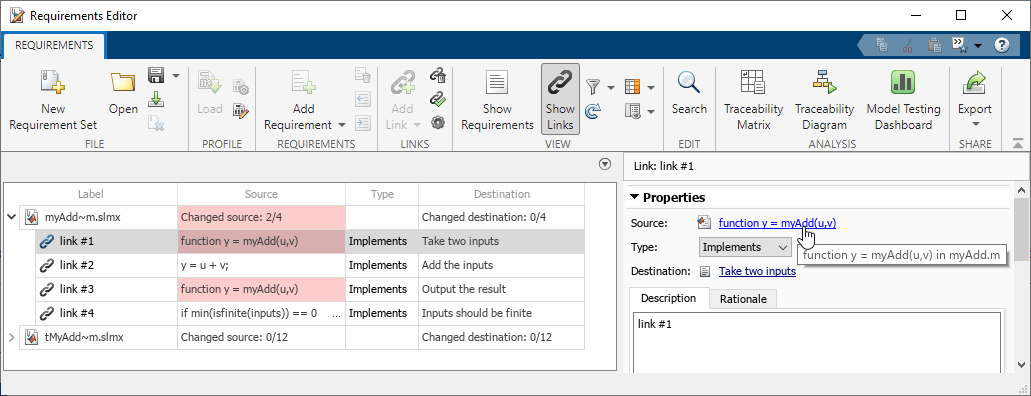
导航到源工件将打开 myAdd.m。您可以通过直观地检查源文件来调查更改,还可以通过创建文件的两个版本之间的比较报告来调查更改。在工程选项卡的 source 文件夹中,右键点击 myAdd.m,然后选择比较 > 与前代比较。
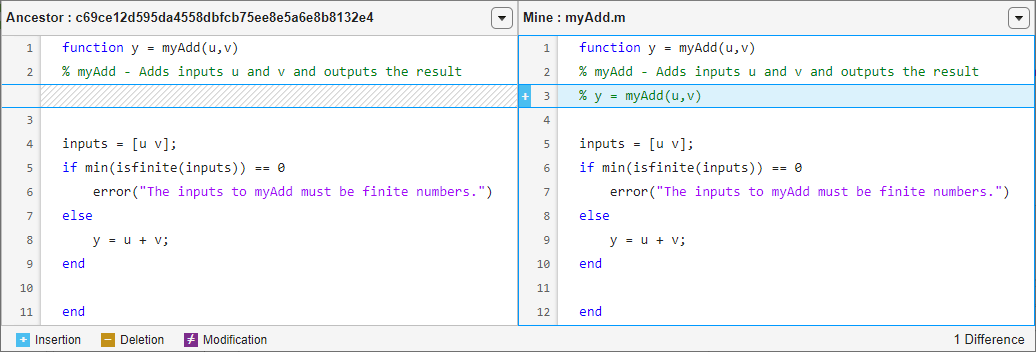
比较报告指示唯一的更改是第 3 行中的新帮助注释。
评估更改影响
现在您已了解了更改的范围,可以开始评估更改对工程的影响。使用可追溯性图可视化更改的影响。在需求编辑器中,选择 link #1。在分析部分中,点击可追溯性图。
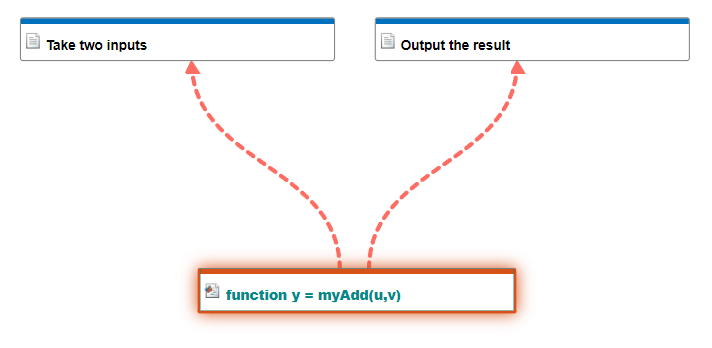
“可追溯性图”窗口会显示 myAdd 函数的可追溯性。红色虚线边缘表示存在更改问题的链接。边上的箭头从 myAdd 函数指向需求,指示更改将从函数传播到需求。
确定协调更改的操作
现在您已了解了更改的范围以及更改在工程中的传播方式,可以开始确定协调更改所需的操作了。
比较报告显示,对 myAdd.m 的更改只是一个注释更改。由于更改对需求没有影响,因此您可以清除更改问题,而无需执行任何进一步的操作。在需求编辑器中,右键点击链接集,然后选择清除所有更改问题。
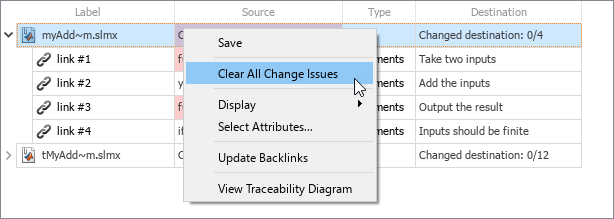
系统会将打开一个对话框,用于输入对更改的注释。该软件会使用 %<updateInfo> 预填充注释字段,这会根据更改详细信息自动生成注释。在该行下方,输入 Comment-only change。
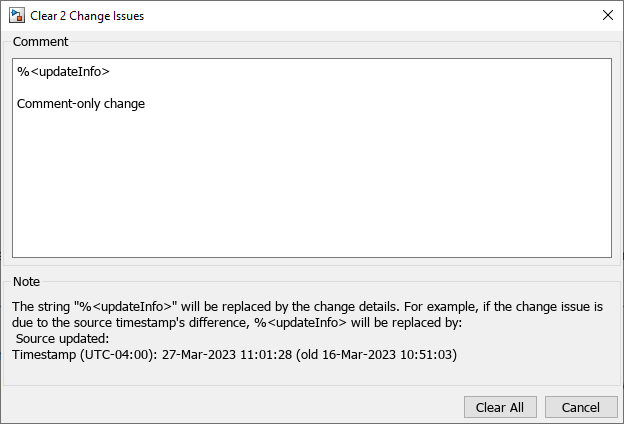
通过点击全部清除来清除更改问题。